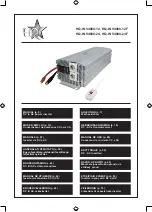
105
Behavior
A single waveform data point can be made up of several sequentially acquired data points. The
waveform data points can also be created from a composite of sampled data taken from multiple
acquisitions. The acquisition modes determine how the waveform data points are produced from
the sampled data.
In Sample
mode, the instrument creates a record point by saving one or more samples during each
acquisition interval. Sample mode is the default acquisition mode. The instrument does no post
processing of acquired samples in this mode.
In Peak Detect
mode, the acquisition alternates between saving the highest sample in one
acquisition interval and the lowest sample in the next acquisition interval. Peak Detect mode only
works with real-time, noninterpolated sampling.
The Hi Res (High Resolution) mode averages all samples taken during an acquisition interval to
create a record point. This average results in a higher-resolution, lower-bandwidth waveform. This
mode only works with real-time, noninterpolated sampling.
Note
A key advantage of Hi Res mode is its potential for increasing resolution regardless of the input
signal. The following table indicates that you can obtain up to 15 significant bits with Hi Res
mode. Note that the resolution improvements are limited to speeds slower than 40 ns/div.
Additional resolution bits
40 ns and faster
8 bits
>550 MHz
80 ns to 200 ns
9 bits
>110 MHz
400 ns to 1
µ
s
10 bits
>22 MHz
2
µ
s to 4
µ
s
11 bits
>5.5 MHz
10
µ
s to 20
µ
s
12 bits
>1.1 MHz
40
µ
s
13 bits
>550 kHz
100
µ
s to 200
µ
s
14 bits
>110 kHz
1
µ
s and slower
15 bits
<55 kHz
In Average mode, the instrument acquires and displays a waveform record that is the average
result of several acquisitions. This mode reduces random noise. Use the multipurpose knobs to
specify the number of waveforms that you want to average.
In Envelope mode, the instrument acquires and displays a waveform record that shows the
extremes in variations over several acquisitions. The instrument saves the highest and lowest
values in two adjacent intervals similar to Peak Detect mode. Unlike Peak Detect mode, the peaks
are gathered over many trigger events.
After each trigger event, the instrument acquires data and then compares the minimum and
maximum values from the current acquisition with those stored from the previous acquisition. The
final display shows the most extreme values for all the acquisitions for each point in the waveform
record.
Summary of Contents for TDS5000B Series
Page 36: ...36 AFTDS Differential Signal Adapter...
Page 280: ...280 Blackman Harris window...















































